Observatory Power Update;
ETX-70 iPhone & SkyTracker Pro DSLR Astrophotography
Posted: 27 November 2019
Monday, 25 November 2019, dawned with overcast skies ahead of another approaching storm system. Monday afternoon I went to the observatory to measure the voltage output from the GFCI outlet. On my 23 November report I mentioned that the GFCI in the observatory was only providing 40-50 VAC (should have been 120 VAC). This time it was down to 32 VAC. I contacted the electrician again who installed it in 2009. Tuesday morning, 26 November, I went to the observatory to take some photos for the electrician. When I opened the observatory door there was a distinct "burnt" smell. The GFCI outlet had obvious signs of smoke:
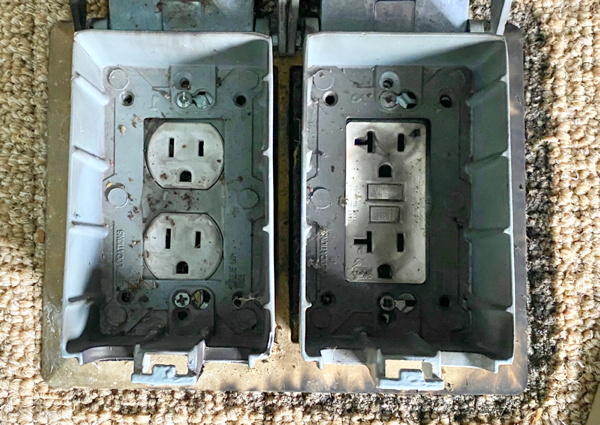
I then checked the observatory circuit breaker; it had tripped. The electrician will come on Monday, 2 December.
Tuesday, 26 November, was clear during the day. As I had no power in the observatory I decided to use my 18+ year old Meade ETX-70AT telescope for some observing.
I also wanted to try out a new accessory for my iOptron SkyTracker Pro. Some times I prefer to use a Ball Head attached to the Manfrotto Geared Head on the SkyTracker Pro (STP). At some orientations of the Ballhead there would be interference with the Ballhead locking lever and the Geared Head mounting plate (circled in the left photo below take in August 2019). The photo below on the right shows the Smallrig Micro Rod extension that raises the Ballhead 1.5" above the plate.
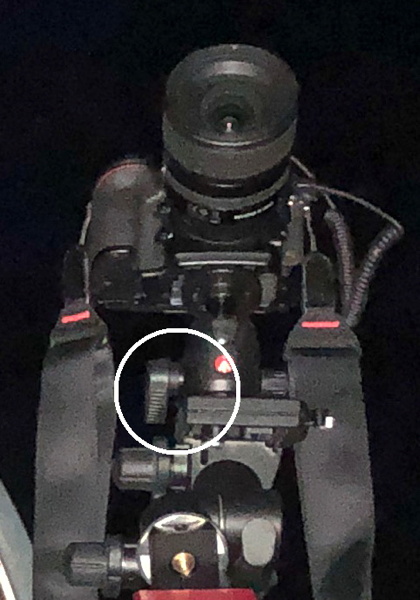
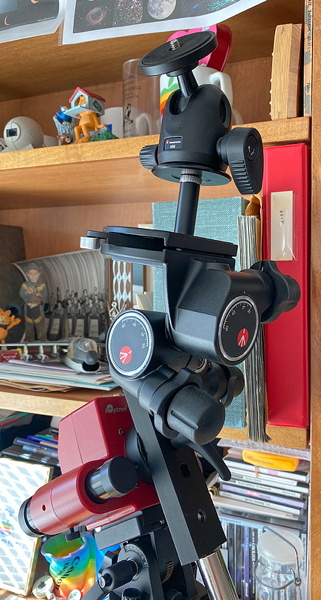
When I ordered it I did not know how well it would work, but for less than $7 I decided it was worth a try. I would have preferred an extension rod that had a larger diameter to provide better stability and have less stress on the rod if the rod was in a horizontal position. I did add a thin metal washer between the rod and the Geared Head plate. This night would be the first test.
|
Open: Tuesday, 26 November 2019, 1807 MST Temperature: 46°F |
Session: 1408 Conditions: Mostly clear |
Equipment Used:
ETX-70AT
1.25" 25mm eyepiece
1.25" 26mm eyepiece
SkyTracker Pro
Camera:
iPhone 11 Pro Max
D850 DSLR
After opening the observatory, and leaving the 12" LX600 telescope covered, I set up the Meade ETX-70AT telescope and SkyTracker Pro on the observatory patio.
The D850 DSLR + 14mm UWA lens is mounted on the STP. The ScopeStuff Red Dot Finder, Vello ShutterBoss, and Vello extension bar are attached to the D850.
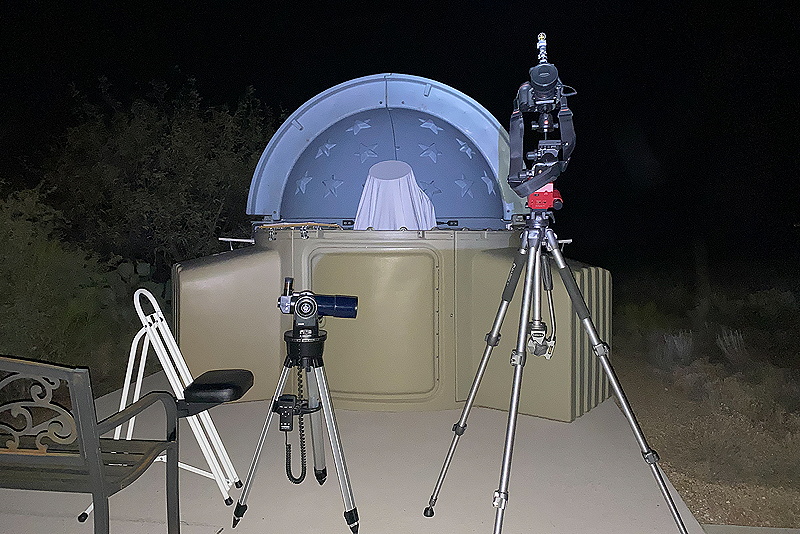
I then took this photo of the southwestern sky showing the planets Saturn, Venus, and Jupiter.
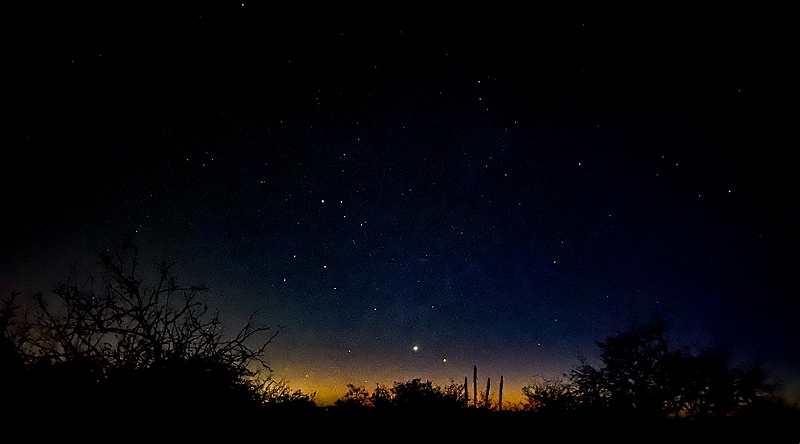
Mouseover or tap on image for labels
1831 MST: ETX-70AT ON.
Using the ETX-70AT at a magnification of 14X (25mm eyepiece) I viewed the planets Saturn, Neptune, and Uranus and the asteroid Vesta. Saturn showed a disk and the Ring, but none of the other planets showed a disk due to the low magnification. I then viewed M45 (the Pleiades), M27 (Dumbbell Nebula), M57 (Ring Nebula), and the Double Cluster (open star clusters), 14X. All were nice views.
I then mounted the iPhone 11 Pro Max on a 1.25" 26mm eyepiece using a Meade Smartphone Adapter. I took these afocal 13X photos using the iOS app NightCap Camera.
M27 (Dumbbell Nebula), ISO 12500, 17 seconds, 1X lens
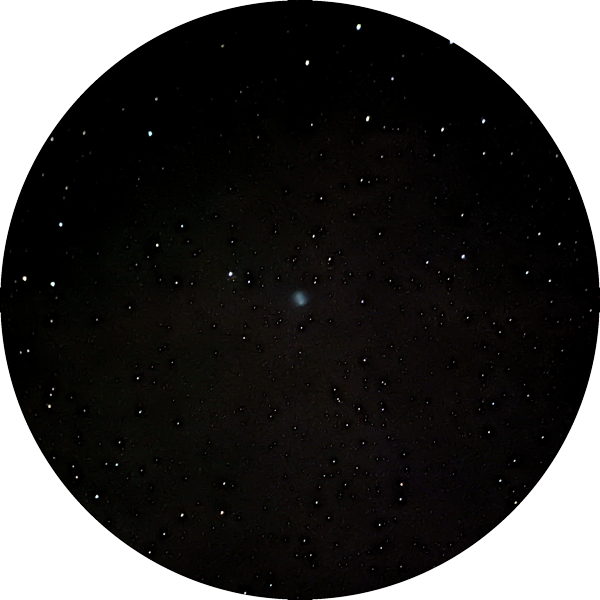
M45 (Pleiades), ISO 12500, 6 seconds, 1X lens
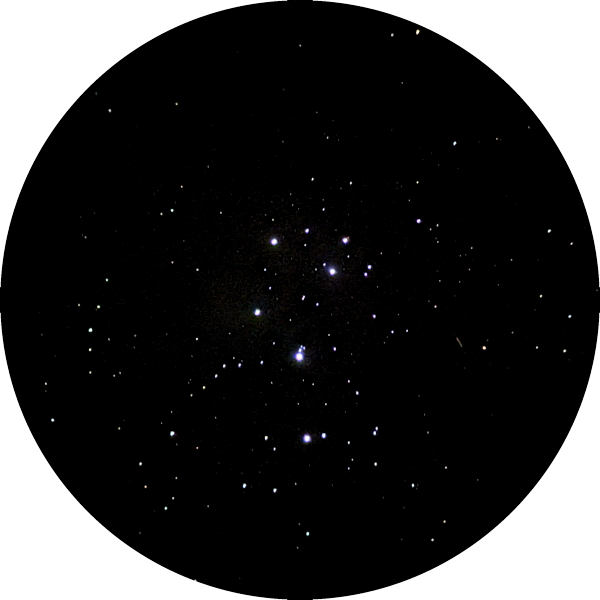
I used a PhoneSkope Bluetooth Remote Shutter Release. It worked fine this night. It had not worked reliably with the initial iOS 13 release, but apparently one of the recent iOS 13 updates solved the Bluetooth re-connection issue.
1925 MST: ETX OFF.
1933 MST: SkyTracker Pro ON.
Polar aligned the STP. I then began taking some photos of the eastern sky with the D850 DSLR + 14mm UWA lens. This is a tracked f/3.5, 1 minute, ISO 1600, White Balance Auto, FL 14mm, photo. It shows the constellations of Cassiopeia and Perseus, the Andromeda Galaxy at the top, the Double Cluster, the Pleiades, Hyades, the Milky Way, and more.
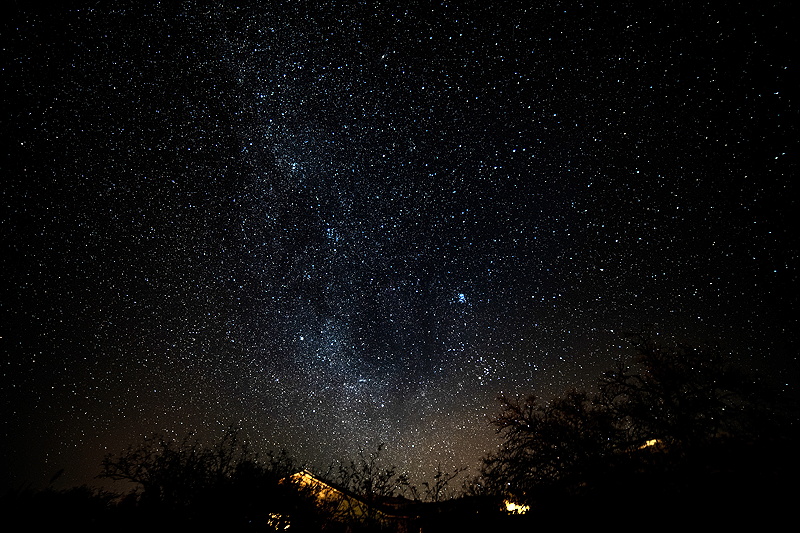
Mouseover or tap on image for labels
1957 MST: STP OFF.
The Smallrig Micro Rod extension worked fine. I did not try to stress it by having the camera at an extreme angle.
I ended the session as I was getting cold!
|
Close: Tuesday, 26 November 2019, 2007 MST Temperature: 39°F |
Session Length: 2h 00m Conditions: Mostly clear |
Comments are welcome using Email. Twitter users can use the button below to tweet this report to their followers. Thanks.
Cassiopeia Observatory Home Page
Copyright ©2019 Michael L. Weasner / mweasner@me.com
URL = http://www.weasner.com/co/Reports/2019/11/27/index.html
